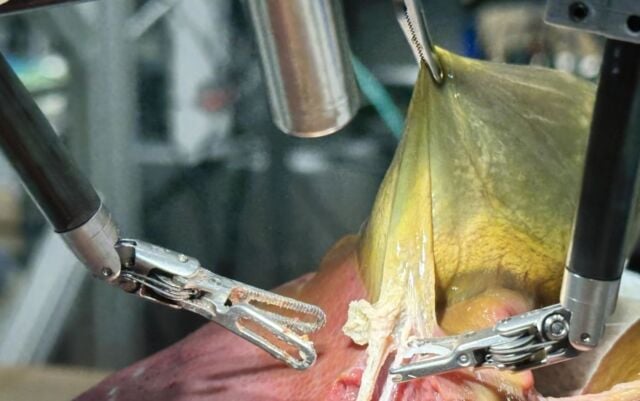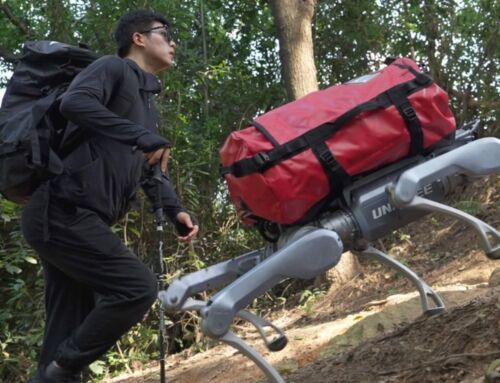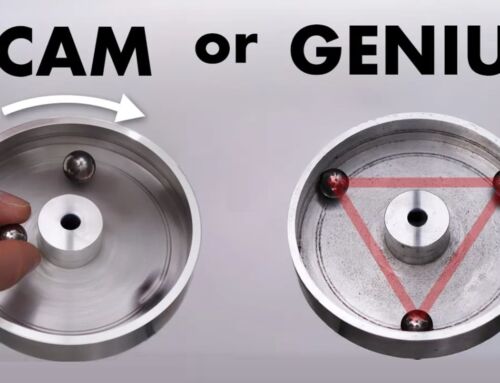 The surgical robot is performing a gallbladder surgery. © Juo-Tung Chen/Johns Hopkins University
The surgical robot is performing a gallbladder surgery. © Juo-Tung Chen/Johns Hopkins University
A robot perfectly performs surgeries and achieves a 100% success rate without human help.
Most research on autonomous surgery has focused on automating simple tasks in controlled settings. But real surgeries are more complex; they require precise, flexible movements over long periods and the ability to adapt to the natural variation in human tissue. These challenges are hard to solve with current logic-based methods or standard end-to-end learning.
To bridge this gap, the Johns Hopkins University team developed a hierarchical system for handling complex, long-duration surgical tasks.
This new method uses two levels of control: a high-level policy that plans tasks and gives instructions, and a low-level policy that handles the detailed movements. The high-level planner works in language, providing step-by-step or corrective instructions to guide the robot and help it recover from errors made during execution.
The system was fully autonomous and achieved a 100% success rate across eight different gallbladders.
This hierarchical approach allowed the robot to recover from mistakes and handle the challenges of real surgical environments.
“Our work shows that robots can now complete entire surgical steps on their own — an important step toward bringing autonomous surgery into the clinic.”





Leave A Comment